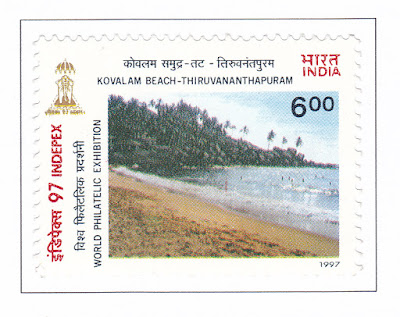Department of Posts has released a number of stamps showcasing India’s unique culture and evolution as a modern nation.
Stamps are considered as a window in a nation’s history, culture, traditions and people. These “little ambassadors” showcase a country’s unique achievements and highlight diversity in heritage and nature. India has a long history and a rich socio-cultural diversity. Post-Independence, India has made some brilliant achievements in the field of science and technology, arts and commerce industry. Department of posts has released a number of stamps showcasing various aspects of India’s unique culture and milestones in its evolution as a modern nation.

It all started from 1st July, 1852 when the first postage stamp of India, Scinde Dawk was issued. This stamp was embossed individually on a paper as a wax wafer in red colour. It had a limited regional postal usage. On 1st October, 1854, a set of four stamps with all India postal validity were issued. The denominations were 1⁄2 annas, 1 anna, 2 annas and 4 annas. A number of Indian princely states also issued postal stamps. The first set of stamps of independent India was issued on 21st November, 1947. They depicted the Indian National flag which was unfurled on 15th August, 1947. It had the slogan of ‘Jai Hind’ in the Devnagari script. The Department of Posts has also released a number of stamps on various national & international themes. The national culture and heritage were depicted on diversities, food habits, clothing, festivals & natural landscape.
Here’s a quick glimpse of India as seen on several of its stamps:
Beaches
These stamps, which were released in 1997, serve as a reminder of the stunning beaches that India is home to. Anjuna Beach and Bogmalo Beach in Goa, Kovalam Beach in Kerala, and Gopalpur on Sea, a historic port in Odisha, are all included in the collection.
Heritage Railway Stations
The Indian Railways, which boast of the second-largest rail network in the world and the largest in Asia, are the backbone of the country. Indian railroads are evidence of the nation’s quick industrialization and modernization. This is depicted on four stamps that show the nation’s historic railroad stations. Released in 2009, these include the Mumbai CST station, the Howrah station, the Chennai Central station and the Old Delhi station.
National Parks
Stamps that highlight five national parks, were released in 2007 and recognized the nearly 30,000 species of animals in the nation. The parks featured included Kaziranga National Park in Assam, the one-horned rhino sanctuary, Bandhavgarh National Park in Madhya Pradesh, Mudumalai National Park in Tamil Nadu, Periyar National Park in Kerala and Bandipur National Park in Karnataka.

Bridges
The bridge stamps were released in 2007 to honour India’s iconic bridges and showcase the Mahatma Gandhi Setu in Bihar, which was constructed across the river that Gandhi crossed to enter Champaran, the birthplace of the freedom struggle. Other bridges that featured in the stamps included the Pamban Bridge in Tamil Nadu, the Howrah Bridge and Vidyasagar Setu in Kolkata.
Cuisines
Issued in 2017, 24 stamps commemorate the many diverse cuisines in the country. Divided into categories of festival cuisine, popular cuisine, regional cuisine, and bhog prasad, the stamps feature savoury snacks such as dhokla and vada pav and sweets like gujhiya and seviyan.
Waterfalls
The waterfall stamps do an excellent job of capturing India’s cascading waterfalls. The beautiful Athirapally Falls in Kerala, the magnificent Jog Falls in Karnataka, the Kakolat waterfall in Bihar, and arguably the most well-known, the Kempty Falls in Mussorie, are all depicted on the 2003-issued stamps.
Textiles
India is known for its textiles more than anything else. Indian textiles are world-class, with delicate silk sarees and beautiful embroidery. Four textile stamps, which were issued in 2009, featured four of the most recognised Indian textiles, namely, Kalamkari, Apa Tani weaves, Kanchipuram silk and Banaras silk. Postal stamps are indeed an interesting way of looking at a nation’s history and umpteen methods to chronicle changes and contributions that shape its future. These ‘cultural ambassadors’, truly reflect why India is a fast-emerging tourist destination.
The writer is Chief Post Master General, Delhi Circle, Department of Posts

